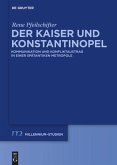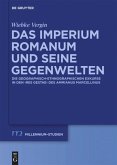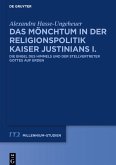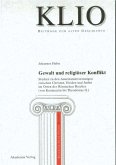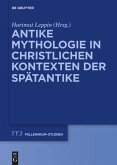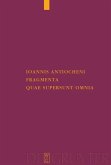The process of Christianisation brought with it a new form of violent conflict to the Roman world: religiously motivated attacks on places, objects or people. The most radical form of such conflicts were attacks on the sanctuaries of religious opponents? on temples, synagogues and Church buildings. The results were dramatic and the attacks demanded a reaction from all institutions, from the Emperor to the urban elites. This volume analyses the role of the law, the imperial and local administrations, and the relationship between the institutions and the new regional and local communities whichestablished themselves at the time.
Mit dem Prozess der Christianisierung entstand im Römischen Reich eine neue Art der gewaltsamen Auseinandersetzung: das religiös motivierte Vorgehen gegen Orte, Objekte oder Personen. Die radikalste Form dieser Aggression wandte sich gegen Heiligtümer des religiösen Gegners - Tempel, Synagogen oder Kirchengebäude. Die Folgen waren einschneidend: Der Angriff auf Kultorte forderte den Einsatz aller Institutionen des Reiches, vom Kaiser bis zu den städtischen Eliten. Mit der Machtverschiebung auf lokaler Ebene gelang es Bischöfen und religiösen Charismatikern, sich neben der Administration als neue Autoritäten zu etablieren.
Die Beiträge analysieren die Perspektive des Imperiums und seiner Institutionen auf das Phänomen der religiösen Gewalt und das gewaltsame Vorgehen gegen Kultorte. Die Rolle der Gesetzgebung und das Verhältnis der Ebenen der kaiserlichen Verwaltung zueinander werden ebenso untersucht wie die Beziehung der staatlichen Institutionen zu den sich neu strukturierenden regionalen und lokalen Öffentlichkeiten. Zudem werden Handlungsspielräume auf regionaler und lokaler Ebene im Kontext der Erlasse und Gesetze bestimmt. Auf der Basis lokaler Fallstudien werden grundlegende Konfliktkonstellationen erörtert und jene Institutionen und Gruppen untersucht, welche die Konstellationen und Verlaufsformen der Konflikte maßgeblich bestimmten.
Mit dem Prozess der Christianisierung entstand im Römischen Reich eine neue Art der gewaltsamen Auseinandersetzung: das religiös motivierte Vorgehen gegen Orte, Objekte oder Personen. Die radikalste Form dieser Aggression wandte sich gegen Heiligtümer des religiösen Gegners - Tempel, Synagogen oder Kirchengebäude. Die Folgen waren einschneidend: Der Angriff auf Kultorte forderte den Einsatz aller Institutionen des Reiches, vom Kaiser bis zu den städtischen Eliten. Mit der Machtverschiebung auf lokaler Ebene gelang es Bischöfen und religiösen Charismatikern, sich neben der Administration als neue Autoritäten zu etablieren.
Die Beiträge analysieren die Perspektive des Imperiums und seiner Institutionen auf das Phänomen der religiösen Gewalt und das gewaltsame Vorgehen gegen Kultorte. Die Rolle der Gesetzgebung und das Verhältnis der Ebenen der kaiserlichen Verwaltung zueinander werden ebenso untersucht wie die Beziehung der staatlichen Institutionen zu den sich neu strukturierenden regionalen und lokalen Öffentlichkeiten. Zudem werden Handlungsspielräume auf regionaler und lokaler Ebene im Kontext der Erlasse und Gesetze bestimmt. Auf der Basis lokaler Fallstudien werden grundlegende Konfliktkonstellationen erörtert und jene Institutionen und Gruppen untersucht, welche die Konstellationen und Verlaufsformen der Konflikte maßgeblich bestimmten.


